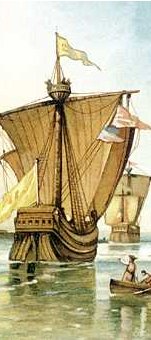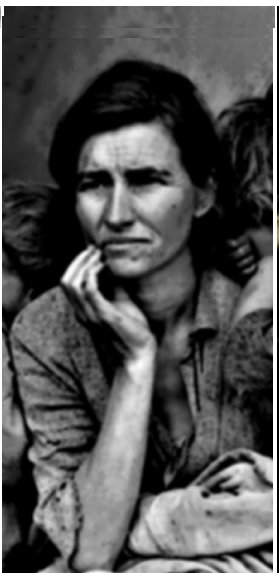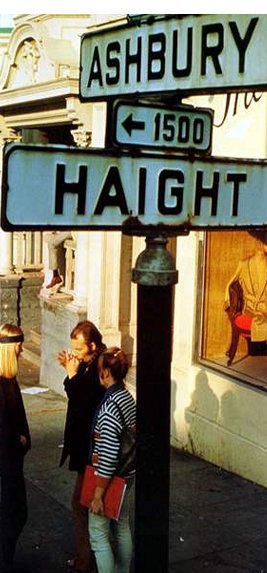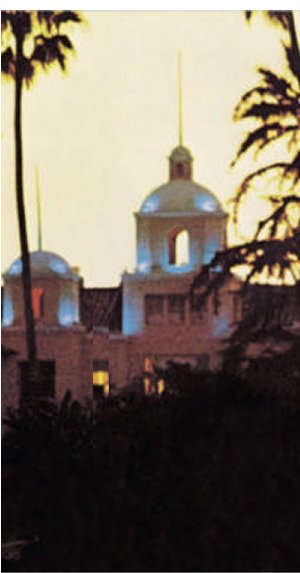The Watts Caste Riots TC Nguyen
Jerry Cohen was born in Joplin, Mo. In 1944 he graduated from Antioch
College in Yellow
Springs, Ohio. Cohen worked for newspapers in Arizona, Illinois, Ohio,
Pennsylvania, and Louisiana. His coverage of the Watts Riots helped
The Los Angeles Times win a Pulitzer Prize. He lived in South
Pasadena and died at the age of 70 in 1993. Still
alive are his wife, Dorothy, his two daughters, and his two grandsons.
¡§Burn, Baby, Burn!¡¨ could be heard
throughout Watts, California mid-August in 1965.1 The forceful
arrests of three African Americans in Watts set off one of the worst race riots
in California history. What started off as an anti-police protest grew into a
six day insurrection ending with Watts in charred ruins
and Los Angeles County
forever changed. Jerry Cohen¡¦s book, Burn,
Baby, Burn!:
The Los Angeles Race Riot, August 1965 ¡§bridges the gap
between people who live in the ghettos and readers who think in terms of ¡¥those
people¡¦.¡¨2 The book lets the reader hear every aspect of the story,
from the police perspective to the rioters to the firemen to civilians. Cohen¡¦s
history of the Watts riots finds faults in every side
and does not only blame the rioters for the violence, looting and burning. This
book clearly documents the Watts riots and gives
explanations of why it happened.
Cohen starts off by introducing the
instigators of the Watts riots: Marquette, Ronald, and
Rena Frye, and Joyce Ann Gaines. Their allegedly abusive arrests sparked the
surrounding crowd¡¦s anger. Cohen explains, ¡§when the
tension has built up, when the frustration has existed long enough, when rumor
has done its work ¡V the conditions are ripe [for rebellion].¡¨3 He
later elaborates on the police brutality and racial prejudice stories of
interviewed Watts residents.
While being arrested for drunk driving, Marquette
resisted and was hit in the head by a baton. After a series of events,
Marquette, his brother Ronald, and his mother Rena were all arrested and being
taken away. Joyce Ann Gains, a barber, was arrested and dragged into a cop car
after she supposedly spit on an officer. Because she was wearing her barber
smock, which looked like a maternity dress, people thought she was pregnant and
began protesting and jeering at the police for
mistreating a pregnant girl. According to one observer, ¡§what really started it
was, as I say, when the Highway Patrolman grabbed the girl.¡¨4 Cohen
shows that people can have completely different stories concerning the same
event. Gaines claimed that she was happily talking to her friends when a cop
suddenly put his arm around her neck and pulled her into a car without
provocation. Sergeant Nicholson, the policeman who arrested Gaines, said he saw
her spit at a policeman and tried to pull her out of the crowd but she kept resisting
and yelling so he resorted to using force. After the Gaines¡¦ arrest, the crowd
became aggressive. One stranded police station wagon was stoned by the crowd.
While throwing anything they could find, the young African Americans chanted
¡§Burn, baby, burn!¡¨ This was the catchphrase of Magnificent Montague, a
well-known radio DJ at the time. The phrase was popular amongst teens but
quickly caught on to all the rioters. After the first night of rioting,
nineteen policemen and sixteen civilians were injured. Thirty-four were
arrested and fifty vehicles including two fire trucks were damaged.
Cohen describes the ninety-four
degree heat and gives statistics of how high temperatures increase the rate of
crimes. 5 Rumors of police abusing of a pregnant women continued to
incite anger amongst the crowd. One interviewed spectator said ¡§[police] were
hitting girls and little kids,¡¨ and that ¡§got the people mad¡¨ and prolonged the
riots.6 The spectator¡¦s comments on police actions were very
different from the police stories of crazed rioters trying to attack them
during routine arrests. Cohen uses observations from all perspectives within
his history of the Watts riots. Many reporters had
stories of going into the riot zone and getting beaten or stoned. The first newspaper
reporter on the riot scene said police handling the mob on the first night
appeared ¡§indecisive.¡¨7 One man, Ray Fahrenkpf,
was the reporter closest to being killed during the 6-day riots. The police
told him that television personnel presence could be harmful, but as Chief
Parker said, ¡§[The reporters] went ahead ¡V as was their privilege.¡¨8
Fahrenkopf and his group arrived
at the most violent area at one of the most violent times. When Fahrenkopf was alone, ¡§some men came up behind [him] and
struck [him] on the left shoulder with a heavy object.¡¨9 As he fell,
he was kicked in the chin and face, then beaten over
the head by fists. When the attackers left, Fahrenkopf
started walking away when another group came and started beating him savagely
until he passed out. Cohen¡¦s inclusion of Fahrenkopf¡¦s
story shows how the riot areas were violent and dangerous. At about the same
time as Fahrenkopf¡¦s beating, the LAPD called the
California Highway Patrol for assistance. Half the California Highway Patrol
officers carried shotguns, unlike LAPD. The rioters seemed afraid of shotguns.
California Highway Patrol officer M. G. Stapleton noted in his report: ¡§CHP
officers spread out around the scene and when the rioters saw the shotguns,
they pulled back immediately.¡¨10 California
Highway Patrol officer Agnell
believed ¡§the shotguns,¡¨ ¡§seemed to
give an advantage to the officers.¡¨11 Cohen takes officers¡¦ quotes
to show the perspectives from each group involved in the riots. Chief Parker¡¦s
black undercover agents in the riot areas reported that only about 200 people
were involved in the rioting so Parker believed he couldn¡¦t justify calling in
the National Guard because there weren¡¦t enough people to consider the event a
major insurrection. Cohen interviewed Henry M. Knawls,
a black man who worked with high school dropouts in poverty areas looking for
jobs. When he saw the news about the riots, he recalls he didn¡¦t believe what
he was ¡§hearing and seeing on television and reading.¡¨12 This
relates to Cohen¡¦s theory that emotions can explode under pressure. Knawls probably thought he knew the residents well but he
couldn¡¦t have predicted the 6-day riots. Cohen writes about Knawls¡¦
experience in Watts during the riots. Knawls was seen as a ¡§Blood¡¨, a fellow black, and wasn¡¦t antagonized
by the rioters.13 He concluded that he did not ¡§feel like an
outsider at any time during the night¡¨ even though ¡§some of the sights I
witnessed were appalling and saddening,¡¨ he ¡§felt a strong bond with [the
rioters].¡¨14 Cohen includes Knawls¡¦ story
to show why the older Blacks did not attempt to stop the young rioters. They
felt a bond against a common ¡§oppressor¡¨ which they identified as whites. Cohen
theorizes that the riots were more caste based than race-based. This theory is
supported by the fact that black-owned stores were also looted and burned and
middle-class blacks were not involved. It was a riot that started due to
frustrations of the cycle of poverty and hopelessness in the ghetto.
In the next quarter, Cohen tells
more stories of people involved in the riot. He explores the feelings of the
nearby suburban white population. They feared that ¡§the existing breach¡K could
split our society irretrievably¡¨ and that the situation could further
deteriorate. Middle-class whites were afraid of the riots eventually spreading
to their neighborhood. After a militant teen said rioting would resume ¡§whether
you like it or not. We¡¦re not gonna fight down here
no more, we¡¦re gonna do it in the white man¡¦s
neighborhoods tonight.¡¨17 Stores that sold guns reported huge sales
after the teen¡¦s statements and in the few days during the riot. Bob Ketcham, the owner of an Inglewood
store, reported selling seventy-five shotguns and rifles in a single day. He
said, ¡§They¡¦re buying every kind of weapon ¡V guns, knives, bows and arrows,
even slingshots.¡¨18 Cohen shows the middle-class fear of being
attacked and robbed. A football game between the LA Rams and Dallas Cowboys
scheduled near the riots was canceled, too. Furthermore, Cohen interviews many
firefighters who served during the riots. He explains the difficulty of their
job: they continued fighting fires while being shot at by snipers, pelted by
rocks and bottles, and taunted and harassed by spectators. Chief Ken Long¡¦s
account of his firemen¡¦s experiences shows the difficulty of their task of
trying to fight fires while protecting themselves at the same time. It was
overwhelming them because ¡§there was too much gunfire¡¨ and they had to pull
back, which was ¡§very discouraging.¡¨20 Firefighter Warren
Tilson lived near Beverly Hills
and was accustomed to working in nice neighborhoods but helped out in Watts
during the riots. His team was escorted to the Watts
fire by police but when the escorts left, people threw stones and glass shards
at them. When they gave up and were about to leave, a wall collapsed on Tilson and another firefighter. Fire Captain J. Slade
Delaney recalls a strange but fascinating event: the ¡§same Negroes who had been
taunting us suddenly were horror-stricken¡¨ ran across the street to tear ¡§with
their hands at concrete and steel, trying to free the two men beneath it.¡¨21
Cohen adds stories like this that show the rioters have compassion, and are
also people. Many of the rioters believed that they were rebelling to achieve a
better life for themselves and their people. Many of the passive observers
admitted that even though they did not like seeing their city being destroyed,
they believed their lives would improve after the rioting ended. The Watts
residents believed police would have to ¡§think twice¡¨ before harassing them.
Cohen depicts the Black Muslims as
a hate group that instigates violent confrontations. He writes about how they
passed out anti-police leaflets to aggravate the already choleric residents of Watts.
Black Muslims were anti-white and preached that the white man was ¡§evil, a
snake who was incapable of doing right.¡¨22 They also disapproved of
peaceful Black rights organizations such as the National Association for the
Advancement of Colored People and the Urban League; Black Muslims did not
support Martin Luther King. Some officers were attacked by Black Muslims. When
Los Angeles Police Department officers Frank Tomlinson and Stanley Kensic stopped a suspicious car in front of a Muslim
Temple, one of the suspects from
the car started choking officer Tomlinson and many Muslims came out of the
temple chanting, ¡§Let¡¦s get them, brothers.¡¨23 They started beating
the officers. When reinforcements arrived, there was a gunfight that ended with
one dead Muslim, six wounded, and fourteen arrested. It seems as though Cohen
adds condemnatory stories of hate groups to show the futility of ignorant hate.
In the book, there are both stories of racist whites and blacks. They all
degrade generalized hate.
Even though it was written soon
after the Watts riots, this book by Jerry Cohen is much
unbiased in its telling. Cohen clearly explains the reasons behind the uprising
of poor blacks. Although he believes violence should never be the answer, he
does not place all blame on the rioters. He tells the stories using the
opinions of eyewitnesses. As a journalist and reporter, Cohen believed getting
the unbiased story out to the public was very important. He did not want just
the opinions of those who analyze the event; Cohen wanted the first-hand
accounts of those who actually experienced the Watts Riots. For his book, Cohen
painstakingly interviewed hundreds of people to make sure he covered every
perspective. This book arguably gives the best description of the six-day riots
that ravaged the city of Watts.
Reading about how specific observers felt and thought at the
riot sites allows you to see the riots almost as if you there yourself.
In the book there are many tragic stories such as murdered friends or family
members that makes you sympathize with the victims.
Cohen¡¦s reoccurring belief is ¡§when
the tension has built up, when the frustration has existed long enough, when
rumor has done its work ¡V the conditions are ripe. When
irritations on both sides have become common, when the potential opponents are
in close proximity, and when there is enough bad feeling, the ingredients are
available. Every little clash must be regarded as a spark that can start
the conflagration.¡¨24 Cohen relates this theory to the start of the Watts
riots. He applies it to the riots saying, ¡§In Los Angeles, during the early
evening of August 11, 1965,
the conditions were ripe. The ingredients were available. Rumor would do its
work. And the spark was there.¡¨25 In his thesis Cohen implies that
even if Marquette, Ronald, and Rena Frye and Joyce Ann Gaines were not
arrested, an insurrection of the poor-class of Watts
would eventually happen. The arrests on August
11, 1965 were just the spark.
Cohen was a reporter and journalist
for the Los Angeles Times at the time of the Watts
riots. Before writing Burn, Baby, Burn!,
Cohen¡¦s writing about the Watts riots for The Los Angeles Times helped
the newspaper win a Pulitzer Prize, the highest honor in print journalism. As a
newsman, he may understand the perils of the reporters he includes in his
history of the Watts riots. To get the best information
for his book, Cohen obtained primary-source accounts of the riots by
interviewing people who were involved in or affected by the riot. He also uses
sources from each side of the conflict, keeping his book as unbiased as
possible.
Laura Axelrod reviews the book on
her website. She writes about how the book ¡§bridges the gap between people who
live in the ghettos and readers who think in terms of ¡¥those people¡¦.¡¨27
She praises Cohen for showing the side of the rioters and not just depicting
them as looters and arsonists. Barbara Oliver Tootle
writes that Cohen¡¦s book seeks to explain the causes and consequences of the Watts
riots.28
One of the most important aspects
of Cohen¡¦s book, Burn, Baby, Burn!, is the fact
that Cohen humanizes the rioters. He shares their backgrounds and their reasons
for rising up against the police department and ultimately Caucasians in
general. Nearly all of the interviewed Watts residents
have some experience of enduring racism from police or not being able to find
work due to prejudice. Laura Axelrod gives her insight; she says ¡§Many were
from the South and came to California
looking for a better life. Instead, many faced racism that was reminiscent of
what they were trying to escape.¡¨29 Cohen explains the influences
behind the Watts riots without being prejudiced. Reading
about the hopeless lives of many of the Watts residents
and the racial abuse they suffered allows people to understand why such a large
scale riot would happen. Cohen¡¦s ideas reflect a New Left historiography.
The Watts
riots were influenced by events in the East United States.
During the Harlem Riot of 1964, the police attack against civil rights
activists in Selma, Alabama.
As one Watts resident recalled, people were saying ¡§Remember Selma¡¨ when the
rioting first started. 30 California
was distinctive from the rest of the country due to its large population and
diversity. It was seen from the outside as a place of racial equality and
attracted minorities. Cohen notes in the book that California
is an ¡§experimental ground¡¨31 for the rest of the country. He
explains that everything happens first in California.
With the perspective of each
side, Jerry Cohen thoroughly documents the Watts riots
of August 1965. Burn, Baby, Burn! is a book that portrays the chaotic riots of Watts
and explains the reasons for frustration against the privileged class. Cohen
shows that an action that some may see as ¡§inhuman¡¨ another may see as
inevitable. He accomplishes even more than he sought to. The book inadvertently
teaches an important lesson, to attempt to understand others; prejudice leads
to hatred and conflict.
1. Cohen, Jerry. Burn, Baby, Burn!. New
York: E.P. Dutton & Co., Inc., 1966, 15.
2. http://www.project1968.com/burn-baby-burn-the-los-an.html
3. Cohen, Jerry 23.
4. Cohen, Jerry 43.
5. Cohen, Jerry 84.
6. Cohen, Jerry 50.
7. Cohen, Jerry 50.
8. Cohen, Jerry 52.
9. Cohen, Jerry 99.
10. Cohen, Jerry 102.
11. Cohen, Jerry 153.
12. Cohen, Jerry 127.
13. Cohen, Jerry 124.
14. Cohen, Jerry 178.
15. Cohen, Jerry 195.
16. Cohen, Jerry 195-96.
17. Cohen, Jerry 253.
18. Cohen, Jerry 237.
20. Cohen, Jerry 213.
21. Cohen, Jerry 252.
22. Cohen, Jerry 263.
23. Cohen, Jerry 313.
24. Cohen, Jerry 23.
25. Cohen, Jerry 24.
27. Axelrod, Laura. ¡§Burn, Baby, Burn!:
The Los Angeles Race Riot, August
1965 by Jerry Cohen.¡¨ Project 1968 ` June 2008 <http://www.project1968.com/burn-baby-burn-the-los-an.html>
28. Tootle, Barbara. ¡§Organizations in Racial Civil Disturbances.¡¨ 1976. 1 June 2008 <http://209.85.173.104/search?q=cache:iiF-IXEADX8J:dspace.udel.edu:8080/dspace/
bitstream/19716/1275/1/MR19.pdf+%22william+s.+murphy%22+watts&hl=en&ct=clnk&cd=17&gl=us&client=firefox-a>
29. http://www.project1968.com/burn-baby-burn-the-los-an.html
30. Cohen, Jerry. Burn, Baby, Burn!.
New York: E.P. Dutton & Co.,
Inc., 1966, 31.
31. Cohen, Jerry 252





















